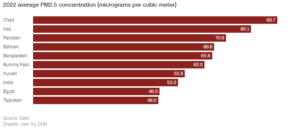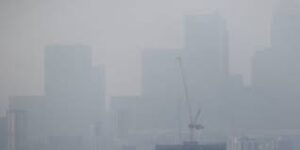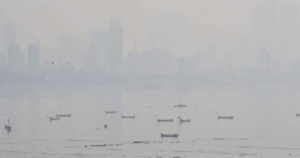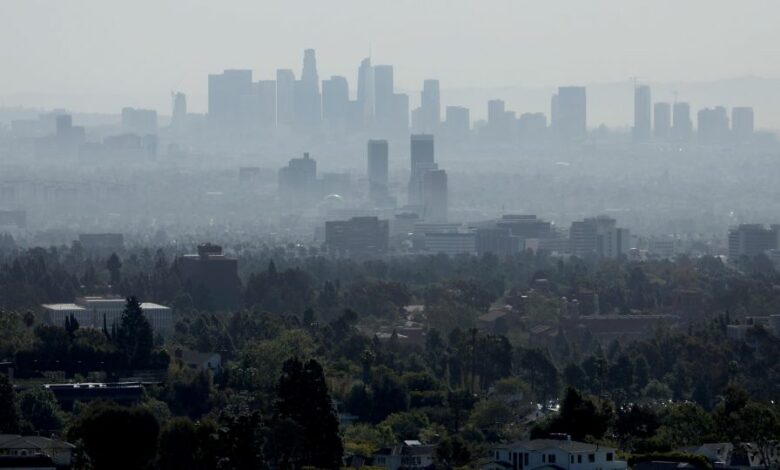Considering that air pollution is expected to reach hazardous levels in 2022, only 13 of the world’s countries and territories have “healthy” air quality last year.
The World Health Organization’s air quality guidelines, which are meant to assist governments in developing regulations to protect the public’s health, were found to be exceeded in roughly 90% of the countries and territories examined, according to a report by IQAir, a company that monitors air quality globally.
Only six nations, including Guam and Puerto Rico, and seven territories in the Pacific and Caribbean, according to an analysis of average air quality from 131 countries and territories by IQAir, met WHO air quality standards, which call for an average air pollution level of 5 micrograms per cubic meter or less. These nations and territories include Australia, Estonia, Finland, Grenada, Iceland, and New Zealand.

With an average level of air pollution of 50 micrograms per cubic meter, seven nations—Chad, Iraq, Pakistan, Bahrain, Bangladesh, Burkina Faso, Kuwait, and India—had poor air quality that greatly surpassed WHO standards. The study concentrated on tiny particulate matter, or PM2.5, which is the smallest but most hazardous pollutant.
PM2.5 enters the bloodstream after being inhaled and travels deep into the lung tissue. It is a substance that is produced when fossil fuels are burned, as well as by dust storms and wildfires, and it has been connected to several disorders including asthma, heart disease, and respiratory conditions. The maximum level of fine particle matter was reduced from 10 to 5 micrograms per cubic meter by WHO in September 2021, as part of tighter annual air pollution limits.

Health problems caused by air pollution claim millions of lives every year. The UN organization estimates that 4.2 million premature deaths in 2016 were linked to fine particulate matter. According to WHO, there might have been roughly 3.3 million fewer pollution-related fatalities if the most recent recommendations had been followed at the time.
The scarcity of monitoring stations in developing nations in Africa, South America, and the Middle East, which results in a lack of data on air quality in those areas, is another disturbing imbalance that the report keeps bringing to light.
Africa still largely remains the most underrepresented continent, despite an increase in the number of nations featured this year compared to 2021. Only 19 of the 54 African nations surveyed by IQAir have sufficient data from their monitoring sites.

Glory Dolphin Hammes, CEO of IQAir North America, stated that every time the company adds a new country that previously lacked data on air quality as it did with Chad in 2021, those nations inevitably end up at the top of the list of the most polluted.
Eating a healthy diet could add 10 years to your life: Research
Hammes told CNN that there isn’t enough information to determine whether Africa is actually the most polluted continent on the planet based on satellite or computer model data. What that implies is that a lot more information is required before we can accurately identify which nations and towns are the most polluted in the world.
- Misleading Video Alters Prime Minister Shehbaz’s Speech Targeting Political Rival, Not His Party - 21/04/2024
- ATC Grants Three-Day Remand for Suspects in Ichhra Bazaar Harassment Case - 19/03/2024
- Pakistan, India, and Bangladesh Lead World in Severe Smog Crisis, Exceeding WHO Guidelines - 19/03/2024


